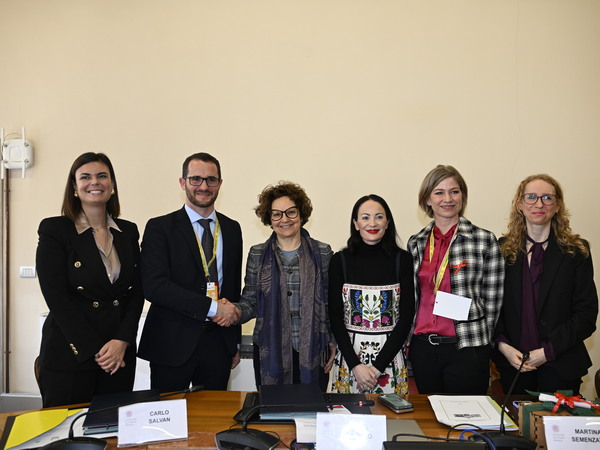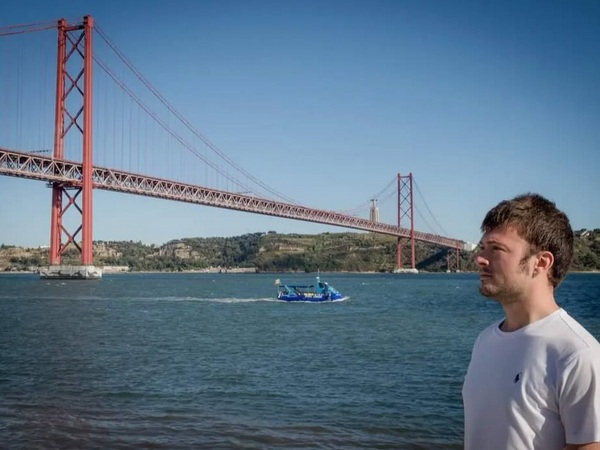In the context of a major European Union project, experts from 14 institutions in ten European countries have found the ideal site to investigate the climate history of the past 1.5 million years. Located in Antarctica, 40 km from the Concordia station, which is jointly operated by Italy and France, this drilling site will allow researchers to extract ice cores up to 2.730 meters deep. Today, the consortium Beyond EPICA – Oldest Ice (BE-OI), coordinated by the "Alfred Wegener" Centre for Polar and Marine Research, presented its findings at the General Assembly of the European Geosciences Union in Vienna.
Italy will also join the project thanks to a team of experts under the supervision of Carlo Barbante, Professor at Ca’ Foscari University of Venice and research associate at the CNR.
The researchers selected one of the coldest, most barren and lifeless places on Earth: “Little Dome C” is a couple of hours by snowmobile (ca. 30 kilometres) from Concordia Antarctic station, located in the Wilkes Land region at an elevation of 3233 metres above sea level. The researchers there almost never see precipitation, and the mean annual temperature is a frigid minus 54.5 degrees Celsius; temperatures rarely rise above minus 25, and can drop below minus 80 in winter.
As part of the European EPICA project (European Project for Ice Coring in Antarctica), from 1996 to December 2004 researchers drilled 3270 metres deep into the Antarctic ice at the current location of the Concordia station. Using detailed analyses of the resulting ice cores, they were then able to reliably reconstruct the climate history of the past 800,000 years. “During that time, there were alternating periods: long glacials and shorter interglacials, at an interval of roughly every hundred thousand years,” explains Carlo Barbante.
Since there are also tiny bubbles trapped in the ice, which contain air from the time in which the ice formed, the climate researchers can use them to measure concentrations of the important greenhouse gases carbon dioxide and methane. And they’re finding clear connections: when the Earth’s climate was cold, there was considerably less carbon dioxide and methane in the air than in warmer periods.
Unfortunately, the experts don’t yet have any ice cores from the hundreds of thousands of years before that time that contain air bubbles suitable for measuring the composition of the atmosphere – and it was in precisely that age when the rhythm at which the cold and warmer periods alternated changed significantly. According to Barbante “More than 1.2 million years ago, the cycles were only roughly 40,000 years long, and were set off by regular changes in the angle of the Earth’s axis. This was followed by a transitional period of roughly 300,000 years, before the hundred-thousand-year rhythm began, roughly 900,000 years ago.”
Climate researchers are familiar with this development thanks to investigations of the sediments that have accumulated on the ocean floor over the millennia. These analyses provide insights into the past temperatures, and to the masses of the ice sheets that covered the Antarctic, Greenland and, for a time, North America and Northern Europe. In contrast, testing the air bubbles trapped in the ice is the only way for them to gather data on carbon dioxide and methane directly from the atmosphere, and their connections to the climate’s development.
“Accordingly, after having gathered the 800,000-year-old EPICA samples, there are very good reasons for drilling into ice that’s at least 1.5 million years old,” adds Barbante
“Beyond EPICA - Oldest ICE will allow the researchers to not only assess the climatic conditions during the ‘mid-Pleistocene transition’, but also the 40,000-year rhythm that preceded it. Since the molecules’ signal trapped in the ice tends to deteriorate somewhat in the course of several millennia, which can skew the analyses, the experts are searching for ice with a higher resolution, in which a metre-long ice core contains ten thousand years of climate history, and the deterioration due to aging is less severe” explains Professor Barbara Stenni of Ca’ Foscari University of Venice
With this goal in mind, over the past three years researchers in the BE-OI project from ten European countries – supported by peers from the Australia, USA, Japan and Russia – have searched for ice in the Antarctic that satisfies these criteria. During flights over the Antarctic, they used radar to analyse the layers of ice below the surface, which they also directly tested by gathering cores at depths of up to 400 metres. Their findings allowed them to draw conclusions on the characteristics of deeper and therefore older layers. In the process, the site “Little Dome C” gradually emerged as the best candidate for ice.
"We were looking for an areas that is at least 1.5 million years old, offers good resolution even in its oldest parts; and is not melting at the base, despite the tremendous pressure created by the masses above it" explains Massimo Frezzotti, the ENEA researcher who supervised the survey expeditions to “Little Dome C”.
If the European Union approves the second phase of BE-OI as hoped, a team of experts coordinated by Carlo Barbante from the Ca’ Foscari University of Venice will set up a camp at Little Dome C, and will live in cargo containers during the drilling. This is slated to begin in mid November 2021, the goal being to gather ice cores ten centimetres in diameter. During three Antarctic summers, the drilling will continue from mid November to early February, until a depth of 2730 metres is reached (in 2024), where the ice should be at least 1.5 million years old. In 2025 the initial data from the ice-core analyses should be available, allowing the international team of researchers to explore the connections between atmospheric greenhouse gases and the climate during the ‘mid-Pleistocene transition’ and the ages before it.










